Vipers (family Viperidae) are iconic front-fanged venomous snakes with foldable, elongated fangs and powerful strikes. Except for Australia, they occur across much of the world. This guide introduces 10 of the most widely known vipers, highlighting quick ID cues, distribution, and risk notes—ideal for general readers and outdoor enthusiasts.

Disclaimer: This article is for education only. If bitten by a suspected venomous snake, seek medical care immediately. Do not cut, suck, burn, or apply a tourniquet.
Bushmaster
Russell’s Viper
White-lipped Pit Viper (Green Pit Viper)
Sharp-nosed Pit Viper (“Hundred-pace Viper”)
Fea’s Viper (White-headed Viper)
Mangshan Pit Viper
Short-tailed Pit Viper (“Grass-runner”)
Chinese/Taiwan Habu
“White-browed” Pit Viper
Horned Vipers (Cerastes spp.)
Tags: very large, rainforest, pit viper
Range: Central and South America—especially the Amazon Basin and adjacent forests.
ID: Massive body (often 1.8–2+ m), lance-shaped head, heat-sensing pits, bold dorsal blotches.
Risk: Potent hemotoxic venom and large potential yield. Excellent leaf-litter camouflage; most encounters involve stationary, well-camouflaged snakes.
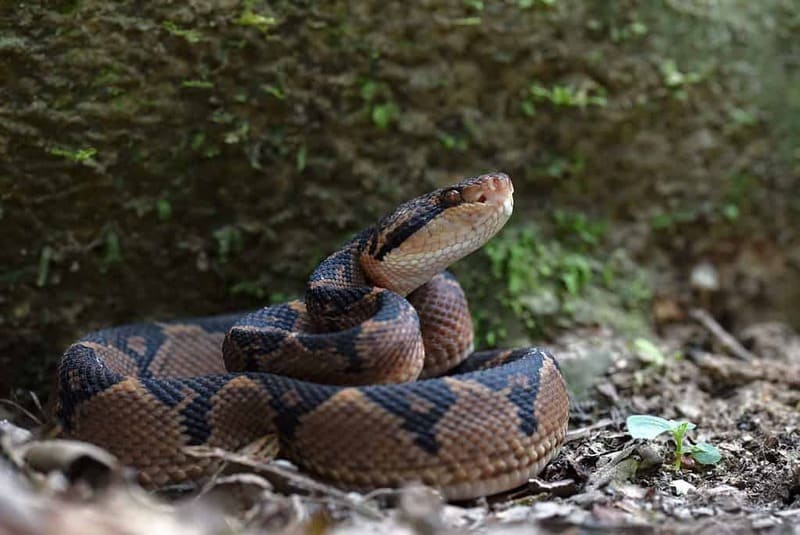
Tags: high medical importance in Asia
Range: South and parts of Southeast Asia.
ID: Stout body with large, rounded chain-like blotches along the back; triangular head.
Risk: Notorious for severe coagulopathy (clotting failure), swelling, and possible kidney injury. One of Asia’s most clinically significant venomous snakes.
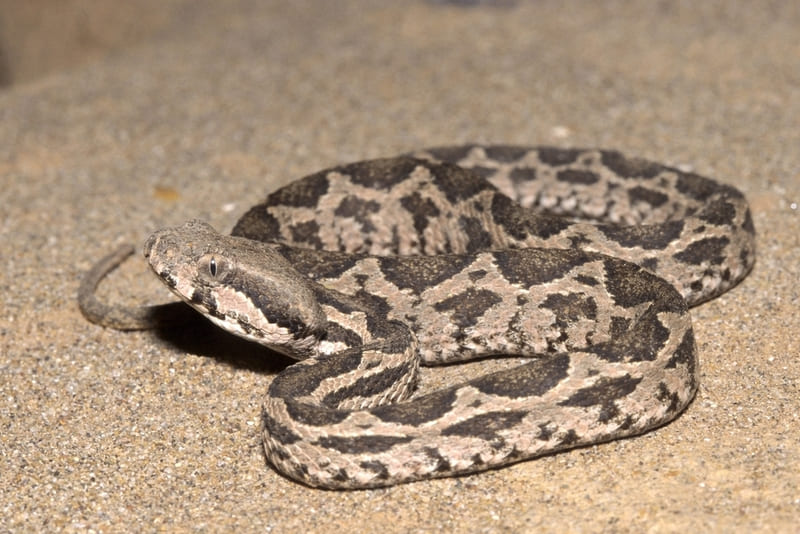
Tags: striking green, common near human activity, nocturnal
Range: Southern China and much of Southeast Asia in bamboo thickets, shrubs, and near water.
ID: Bright green dorsum, pale yellowish belly; males often with red/orange tail tip; large triangular head with a narrow neck.
Risk: Primarily hemotoxic, typically causing pain and local swelling. Fatalities are uncommon, but bites are frequent due to proximity to people.
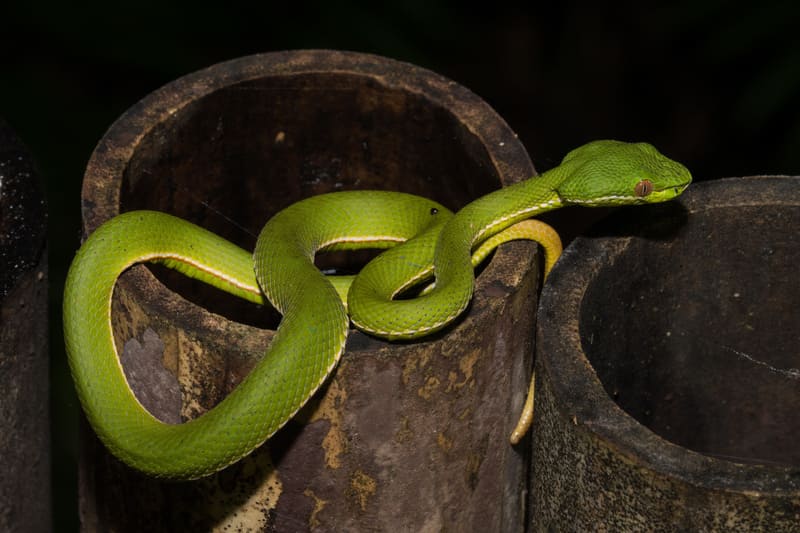
Tags: famed in folklore, montane/valley habitats
Range: Southern China, Taiwan, and nearby regions.
ID: Slightly upturned snout, gray-brown body with dark lateral patches; robust triangular head.
Risk: Hemotoxic venom; folklore names exaggerate lethality, but it remains a dangerous species requiring urgent care after any bite.
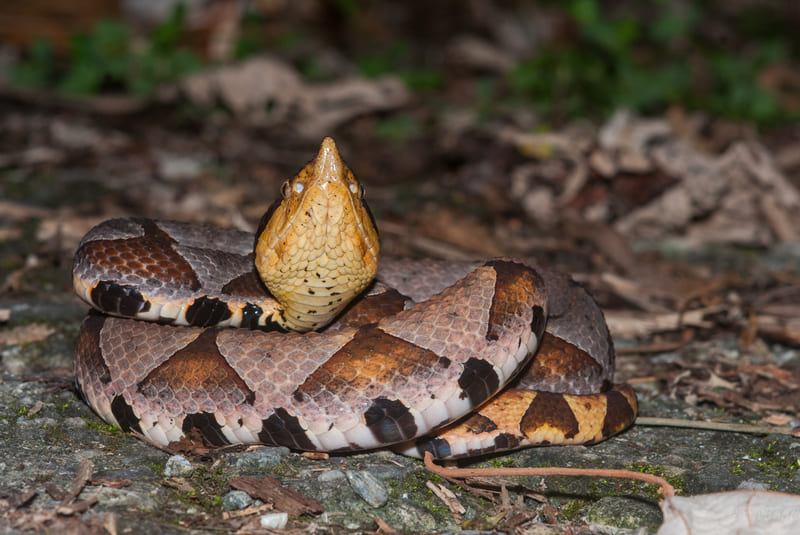
Tags: distinctive head color, cooler montane areas
Range: Mountainous regions of China and adjacent areas.
ID: Paler head contrasting with a purplish-brown body patterned with narrow reddish transverse bars (often with fine dark edging). Typical adult length 60–80 cm.
Risk: Envenomation can include neurotoxic-like symptoms (pain, swelling, dizziness). Encounters are relatively rare; caution is still essential.
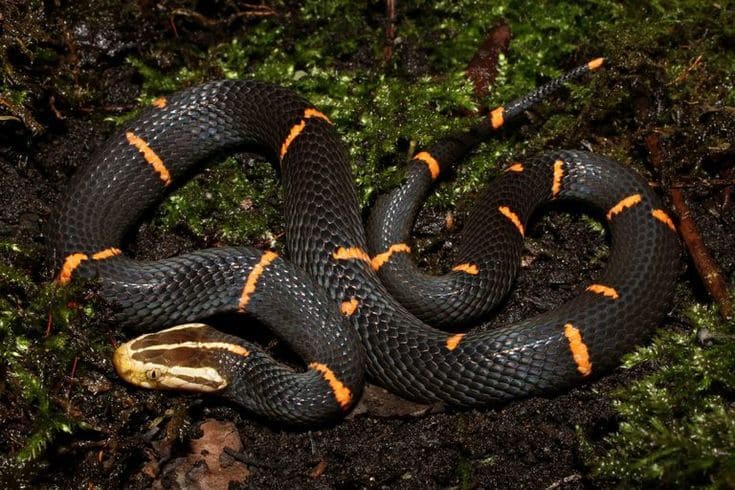
Tags: China endemic, conservation-listed, large pit viper
Range: Restricted to the Mangshan region (Hunan/Guangdong, China).
ID: Black-brown base with intricate fine net-like markings; large “flat-iron”-shaped head; adults can approach ~2 m.
Risk: Considered highly venomous. A protected, endangered species—observe only from a distance and never disturb.
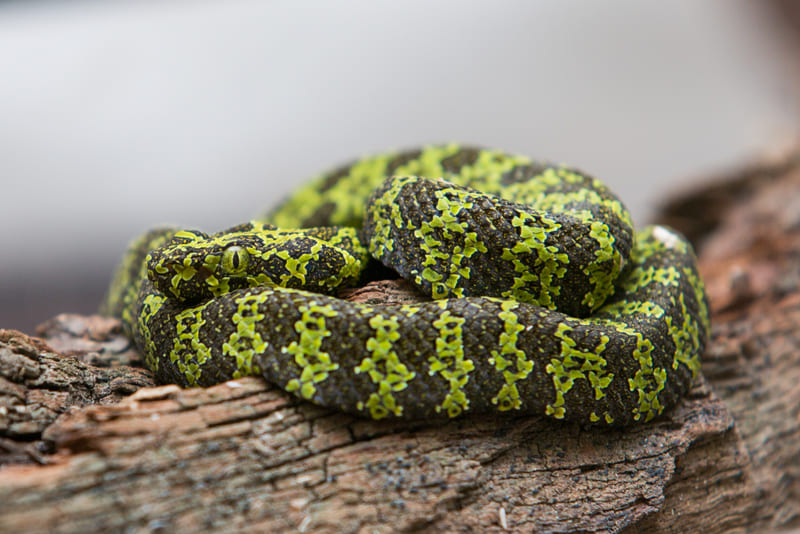
Tags: small but commonly encountered, frequent cause of bites
Range: Widely distributed across parts of China in grasslands, field margins, and open woodland edges.
ID: Short, stout body with a short tail; brown back with pale markings; grayish-white belly; often a heart/peach-shaped blotch behind the head.
Risk: Often implicated in rural/field bite incidents due to high encounter rates. Prompt medical evaluation is important.
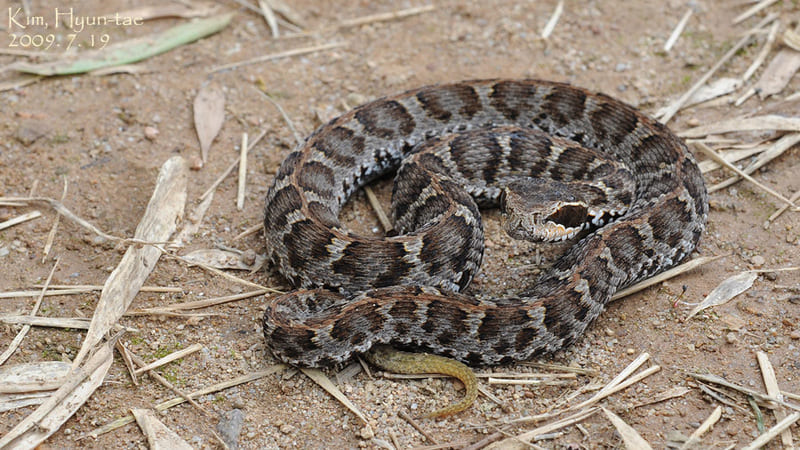
Tags: strong climber, nocturnal ambusher
Range: Southern China, Taiwan, and nearby regions—hills, bamboo thickets, streamsides.
ID: Long triangular head, relatively slender body for a pit viper; flexible, grasping tail aids climbing; irregular brown blotches.
Risk: Arboreal or shrub-level ambush can surprise hikers at night. Use headlamps and watch both ground and eye-level vegetation.
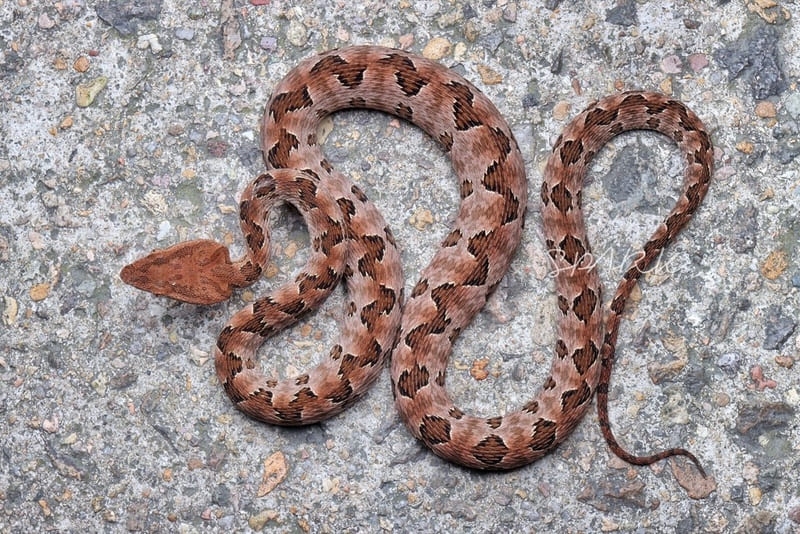
Tags: plains–hill activity, alert temperament
Range: Open fields and hilly areas; more active in warm months.
ID: Often shows a pale eyebrow-like line over the eye (hence the Chinese common name); typical stout viper build with defensive coiling and audible exhalations when disturbed.
Risk: September–October often sees more bites (snake activity + agricultural work). Treat any suspected bite as an emergency.
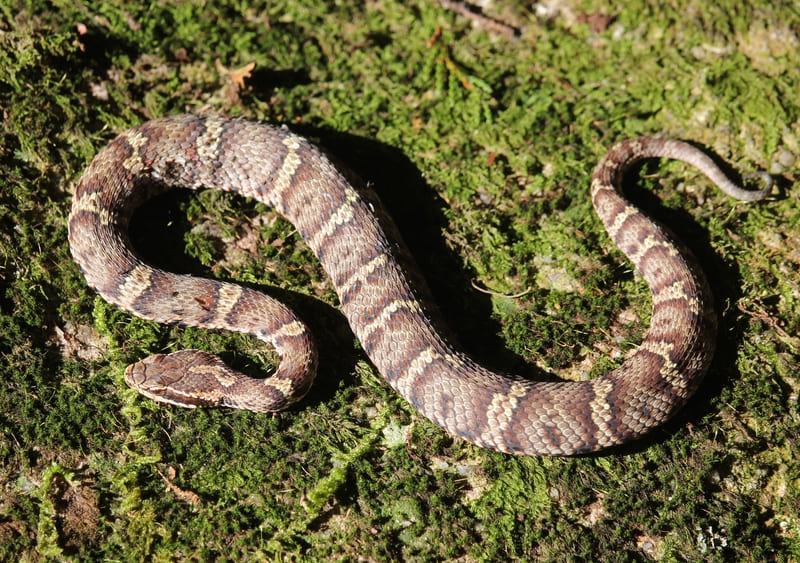
Tags: desert camouflage, eye “horns,” sidewinding
Range: North Africa and parts of the Middle East, including the Sahara and the Negev.
ID: One or two horn-like scales above the eyes, sandy coloration, and characteristic sidewinding tracks on dunes.
Risk: Superb camouflage in sand; activity often peaks at night and dawn. Wear high, closed footwear and avoid placing hands where visibility is poor.
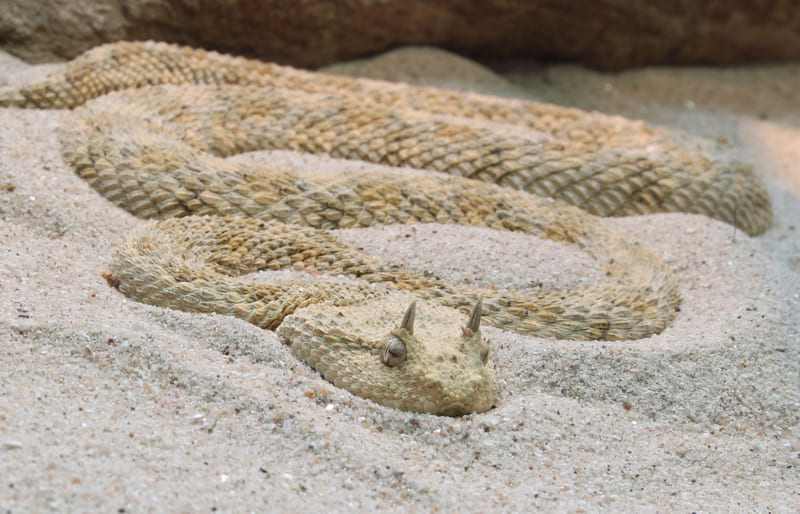
Do not handle wild snakes. Photograph only from a safe distance.
Clothing: long pants, high boots; at night use both headlamp and handheld light to scan ground and foliage.
If bitten:
Seek medical care immediately; keep the limb still and lowered relative to the heart if possible.
Remove rings/watches early; lightly immobilize with an elastic bandage/splint per medical guidance.
Do NOT cut, suck, burn, apply ice, or use a tourniquet.
Note time/symptoms; if safe, take a distant photo for ID to assist clinicians.
Treatment protocols vary by region; follow local medical guidance.
animal tags: Vipers
We created this article in conjunction with AI technology, then made sure it was fact-checked and edited by a Animals Top editor.